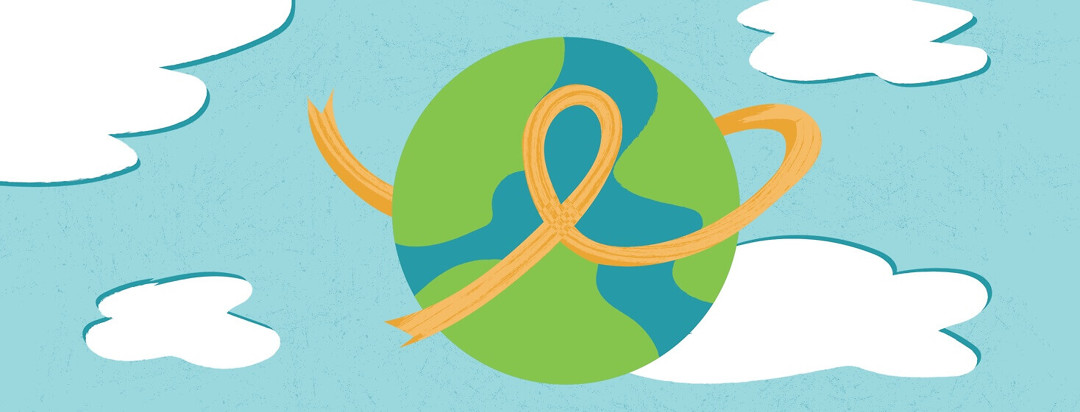AML on My Radar for More Than 15 Years
Back in my newspaper days, when telling someone what beat I covered, I would say something like, “I have arts and entertainment.” I also had the mental health beat, so, similarly, I would say, “I have mental health.” The other day I used similar phrasing – and didn’t like the sound of it – when telling someone what I cover for this site. “I have blood cancer,” I said. Then I backtracked. “NO, I don’t,” I said. “I USED to have blood cancer. I don’t have it anymore. I write about it.”
Not in my blood but still on my mind
Still, although I don’t have it in my blood, I often have it on my mind. The upcoming AML World Awareness Day has made me think about it more. Certain things have changed since my diagnosis in 2003, and some have stayed the same. One change – for the worse – is the overabundance of information on the internet. It didn’t have the pull back then that it has now, so it was easy to follow my doctor’s orders when he said to stay off the internet.
Doing some searching for AML World Awareness Day, I saw that five-year survival rate lags behind other blood cancers. I would have been spooked even more than I already was if I had seen it back then. My doctor at the Dana-Farber Cancer Institute told me some numbers that I don’t remember now. More importantly, I remember him saying that I was a person, not a statistic, and I should concentrate on myself and not on some numbers.
AML awareness
Of course, it’s hard to ignore numbers. Here is an encouraging one from the American Cancer Society: "About 2 out of 3 people with AML who get standard induction chemotherapy go into remission."1 The rub is that, as my doctor told me at my intake, remission is not cure. He said that after two years you break out the Champagne, but only after five years can you say that you’re cured. I made it almost four years and then relapsed after having an autologous transplant. That’s when you get your own stem cells back, supposedly clean after chemotherapy, to replenish your bone marrow.
Dana-Farber doesn’t do these anymore, and while other centers do, they are not the first line of defense. I always worried that a bad actor could sneak in, and that’s apparently what happened. With this type of transplant, you don’t get the graft vs. leukemia effect, in which donor cells fight off leukemia cells. And you still have your same old immune system that let you down in the first place. But you don’t have the side effects that you get with the other type of transplant.2
Stem cell transplant journey
My next two transplants were allogenic, meaning that after chemo, I got the stem cells from a donor. They didn’t work out so well either, because I never got past six months with each of them. The fourth one, ten years ago, with a different donor, was the charm. By strange coincidence, I found out that we were separated by only one degree, since she was in a book group with a friend of mine and lives not too far from me. When I met her, I hardly could find any words other than thank you more times than I can count.
The goal of AML World Awareness Day is to let people know about the signs and symptoms and treatment options for this aggressive cancer. One of those symptoms is fatigue, and although you can’t go running to the doctor every time you’re tired, you should look into unusual fatigue. That’s what I did. It helped that I was a runner and in tune with my body. A slower than usual time in a race sent me to the doctor looking for answers. Catching it early, before it caught me, helped me stay as strong as possible during the rigorous treatment.
New research highlights precision medicine
The standard of care for patients with AML has remained the same for 40 years, and the good news is that the Leukemia and Lymphoma Society is coordinating the “Beat AML Master Trial” of precision medicine, in collaboration with five cancer centers, to find new treatments.3
“With advances in genomics, we can now identify and target specific types of AML. This precision medicine approach is the key to new therapies for patients," according to the LLS.3 It would be great (understatement of the year) if patients didn’t have to endure multiple transplants, like I did, and go into a coma and spend four months in the hospital, in order to regain their health. The first results of the trial, published last year, were encouraging.
“Importantly, the investigators announced the creation of a collective dataset that can be used for clinical, genomic, transcriptomic, and functional analyses of AML,” according to a review in Cancernetwork.com.4 (Transcriptomics is the study of the transcriptome—the complete set of RNA transcripts that are produced by the genome.)
The trial is designed to speed up the process of finding better treatments for AML and is open only open to newly diagnosed patient 60 years or older. Since I like to do things differently, I was young to get this disease, only 48. That means it’s been on my radar for 16 years. I live with chronic side effects, but I don’t have cancer, and happy is too tame of a word for how I feel about that.

Join the conversation